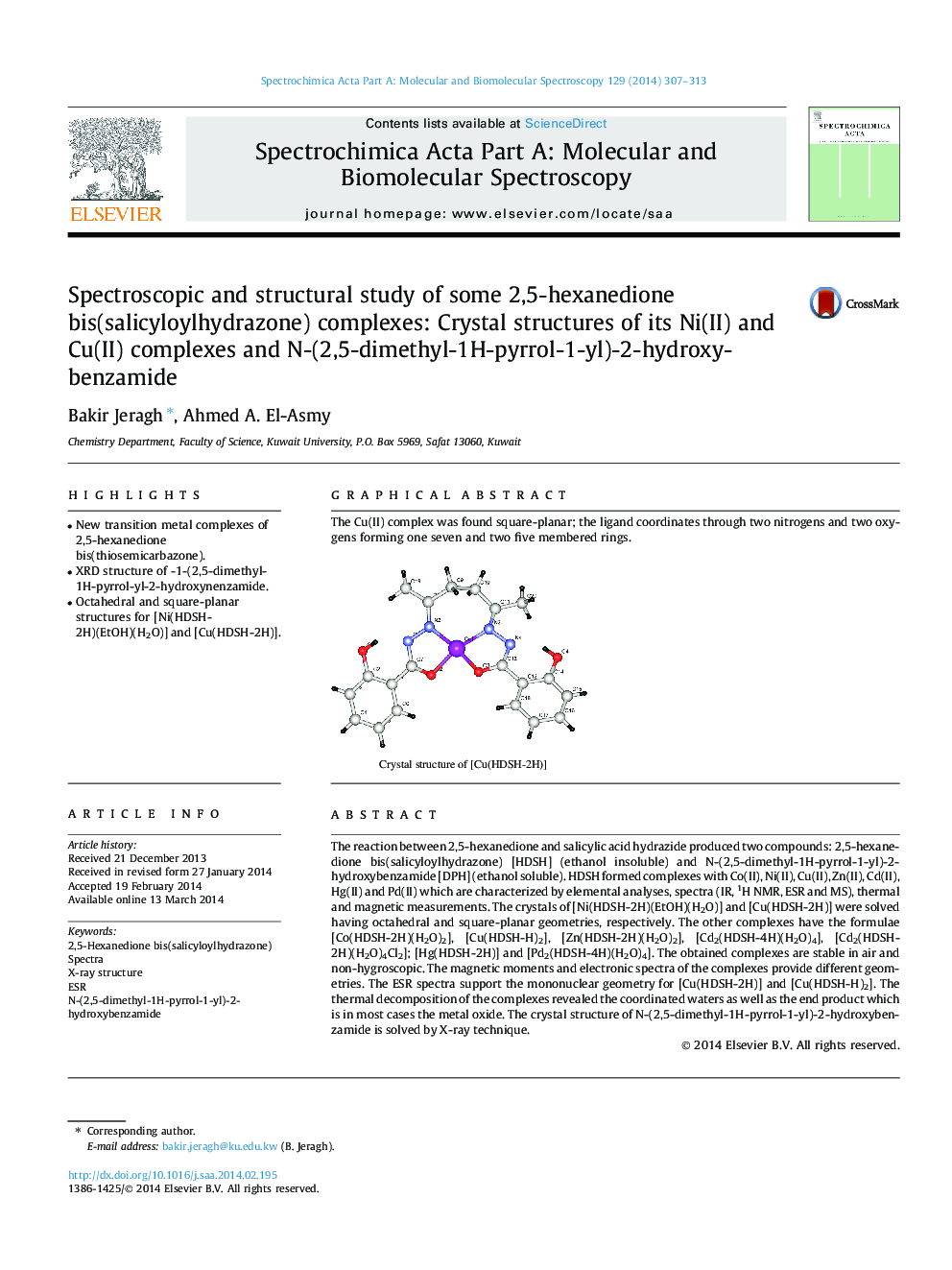| Article ID | Journal | Published Year | Pages | File Type |
|---|---|---|---|---|
| 1229876 | Spectrochimica Acta Part A: Molecular and Biomolecular Spectroscopy | 2014 | 7 Pages |
•New transition metal complexes of 2,5-hexanedione bis(thiosemicarbazone).•XRD structure of -1-(2,5-dimethyl-1H-pyrrol-yl-2-hydroxynenzamide.•Octahedral and square-planar structures for [Ni(HDSH-2H)(EtOH)(H2O)] and [Cu(HDSH-2H)].
The reaction between 2,5-hexanedione and salicylic acid hydrazide produced two compounds: 2,5-hexanedione bis(salicyloylhydrazone) [HDSH] (ethanol insoluble) and N-(2,5-dimethyl-1H-pyrrol-1-yl)-2-hydroxybenzamide [DPH] (ethanol soluble). HDSH formed complexes with Co(II), Ni(II), Cu(II), Zn(II), Cd(II), Hg(II) and Pd(II) which are characterized by elemental analyses, spectra (IR, 1H NMR, ESR and MS), thermal and magnetic measurements. The crystals of [Ni(HDSH-2H)(EtOH)(H2O)] and [Cu(HDSH-2H)] were solved having octahedral and square-planar geometries, respectively. The other complexes have the formulae [Co(HDSH-2H)(H2O)2], [Cu(HDSH-H)2], [Zn(HDSH-2H)(H2O)2], [Cd2(HDSH-4H)(H2O)4], [Cd2(HDSH-2H)(H2O)4Cl2]; [Hg(HDSH-2H)] and [Pd2(HDSH-4H)(H2O)4]. The obtained complexes are stable in air and non-hygroscopic. The magnetic moments and electronic spectra of the complexes provide different geometries. The ESR spectra support the mononuclear geometry for [Cu(HDSH-2H)] and [Cu(HDSH-H)2]. The thermal decomposition of the complexes revealed the coordinated waters as well as the end product which is in most cases the metal oxide. The crystal structure of N-(2,5-dimethyl-1H-pyrrol-1-yl)-2-hydroxybenzamide is solved by X-ray technique.
Graphical abstractThe Cu(II) complex was found square-planar; the ligand coordinates through two nitrogens and two oxygens forming one seven and two five membered rings.Figure optionsDownload full-size imageDownload as PowerPoint slide
